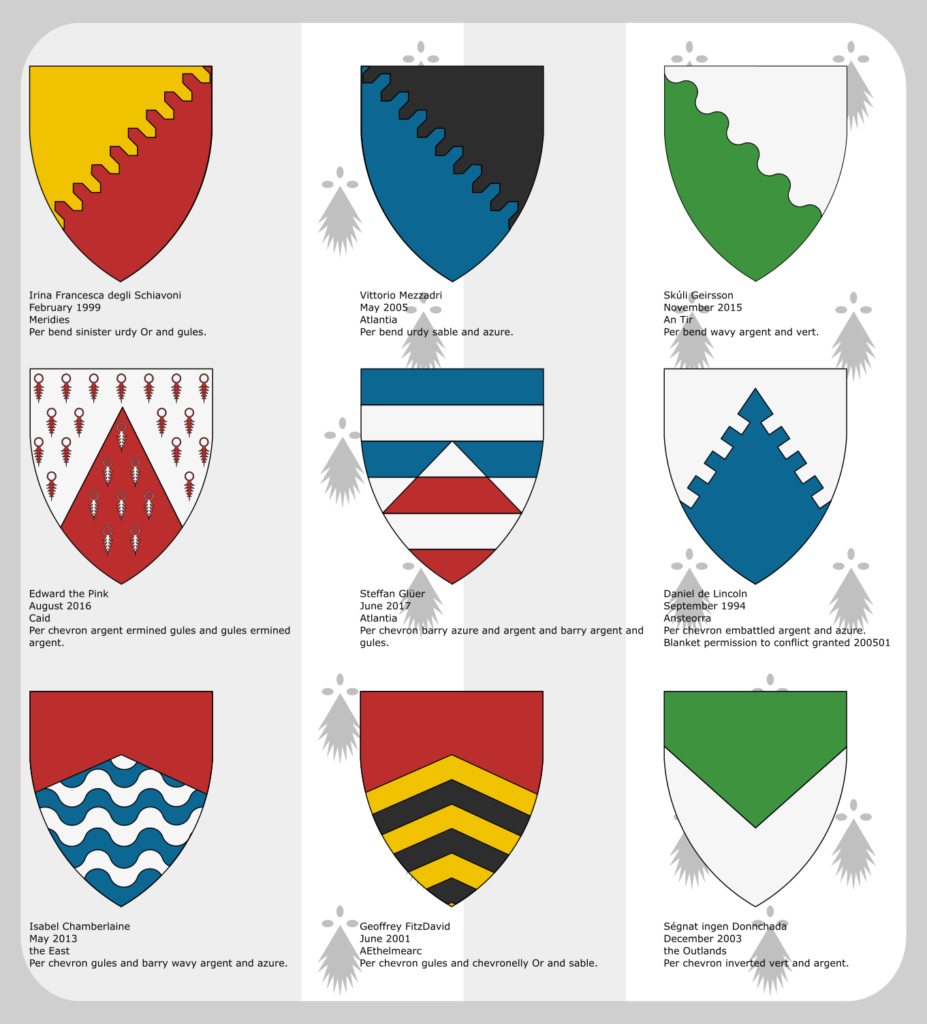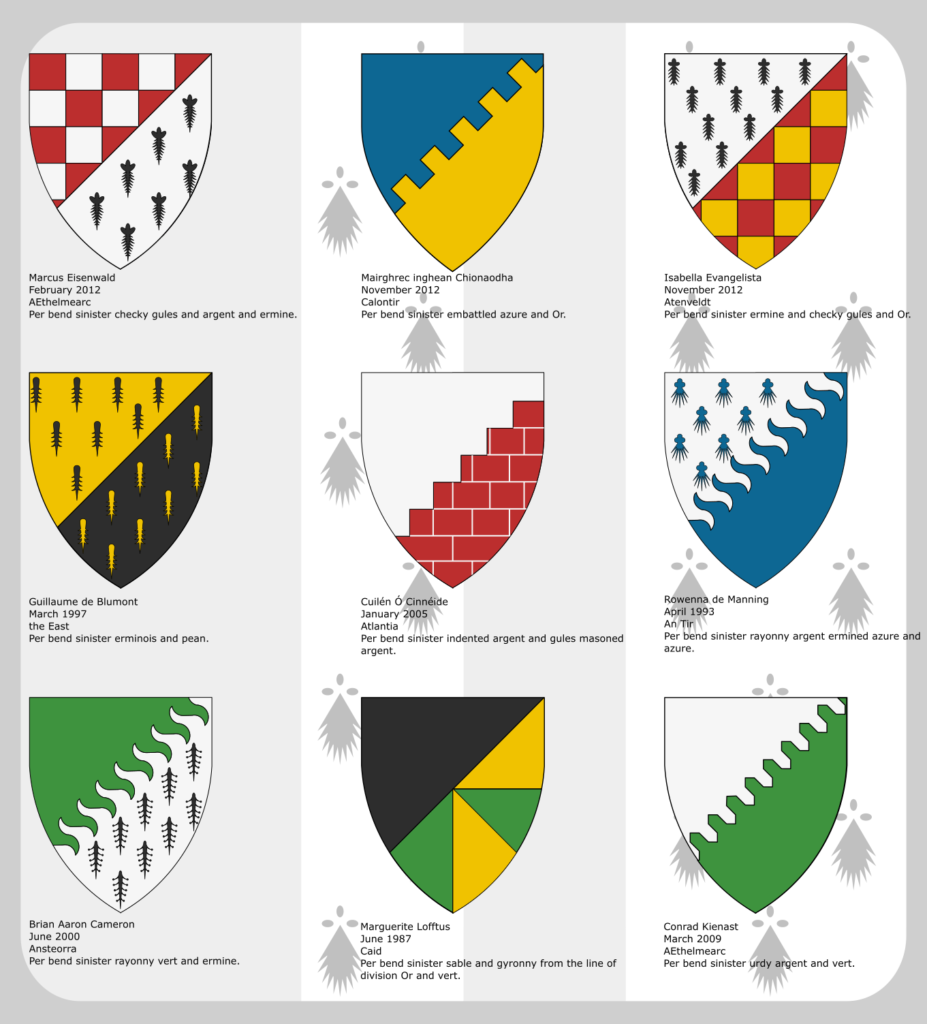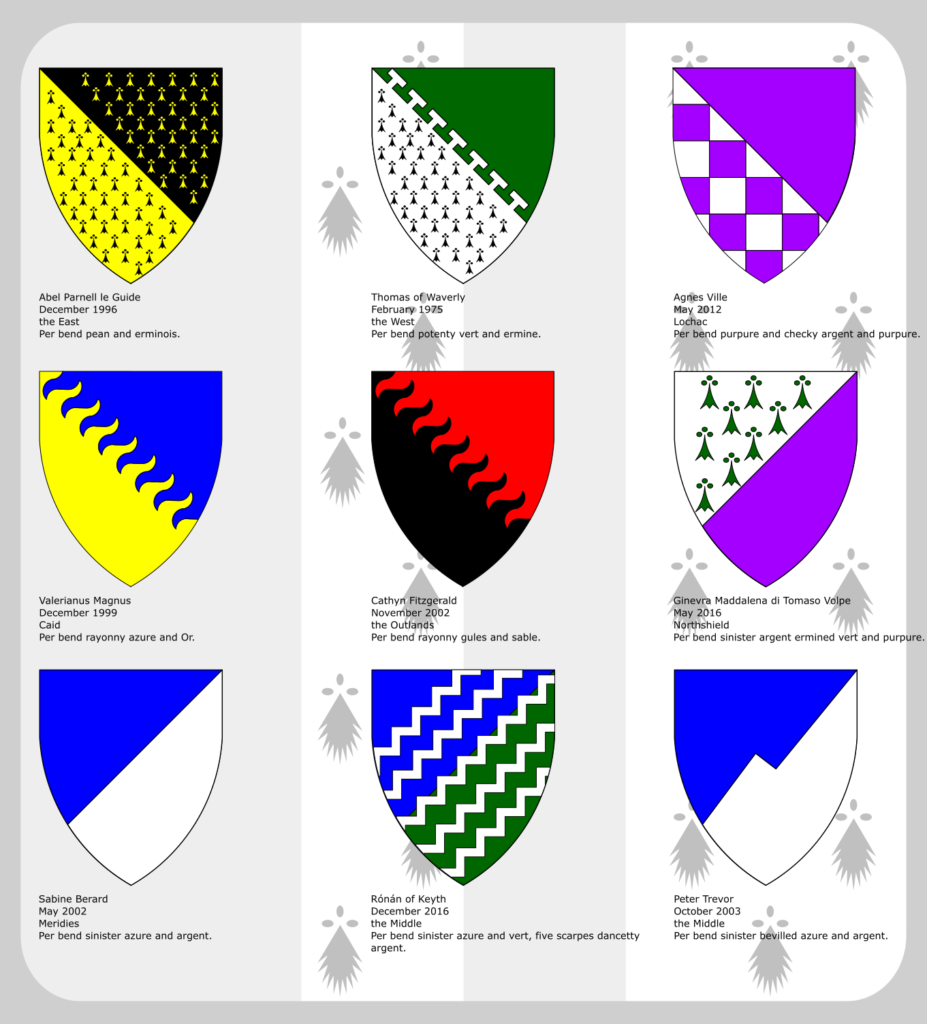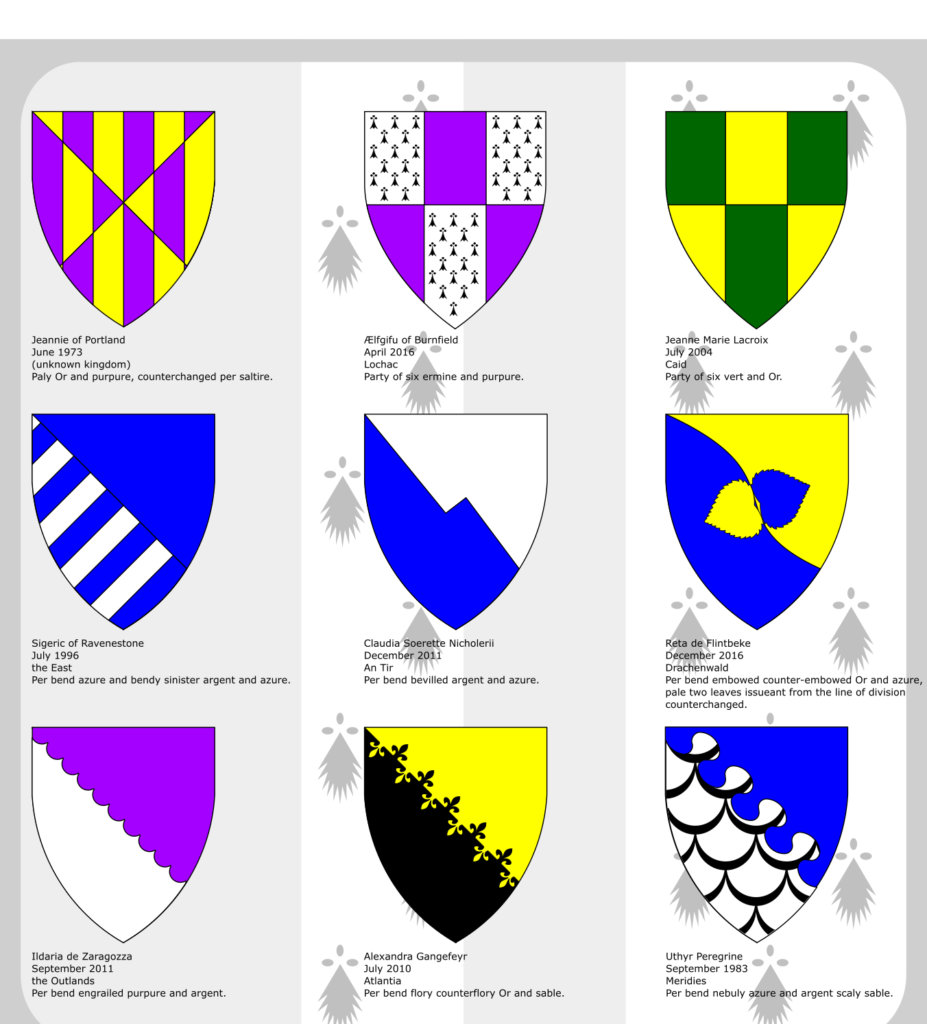Being the ninth part (of many!) of my project to emblazon all the Field Only devices in the SCA’s Ordinary & Armorial as of October 2017.
After pausing the project to re-do the colour palette and make some behind-the-scenes changes, I resumed with Part Eight a little while ago, and have also finished emblazoning all 161 devices on my spreadsheet!
I’ll try and crank out the images to post here from the giant Inkscape SVG file and get one Part posted every couple of days until we hit the end. As I’ve also gone back and corrected and re-coloured all the devices from Parts One through Seven, I’m probably going to republish the whole collection in a slightly different format after the first pass is done. I’ll do any corrections found, then probably reformat to get 12 devices per page and put out a multi-page PDF version of the whole project all at once. This would have the advantage of being suitable for printing, if anyone wishes to do so!
Anyway, on to Part the Ninth, gentles.

Part Nine takes us out of per bend/per bend sinister territory and into the per chevron blazons. Gules and Or being a personal favourite heraldic colour combo I have to admit a liking for Irina Francesca degli Schiavoni’s “Per bend sinister urdy Or and gules” in the top left corner, as well as the two very elegant per chevron plus something else combinations in the bottom row, Isabel Chamberlaine’s “Per chevron gules and barry wavy argent and azure” and Geoffrey FitzDavid’s “Per chevron gules and chevronelly Or and sable”. The chevronelly could stand perhaps to be slightly narrower and slightly more of them, but it’s still a really elegant combination of field divisions.
On to Part Ten in a couple of days! It looks like it will take eighteen pages at nine devices per page to get through this first pass, so we’re just over the halfway point now… and then I’ll see about the field only badges, I guess, as well as the final corrected versions of these devices I mentioned above.


